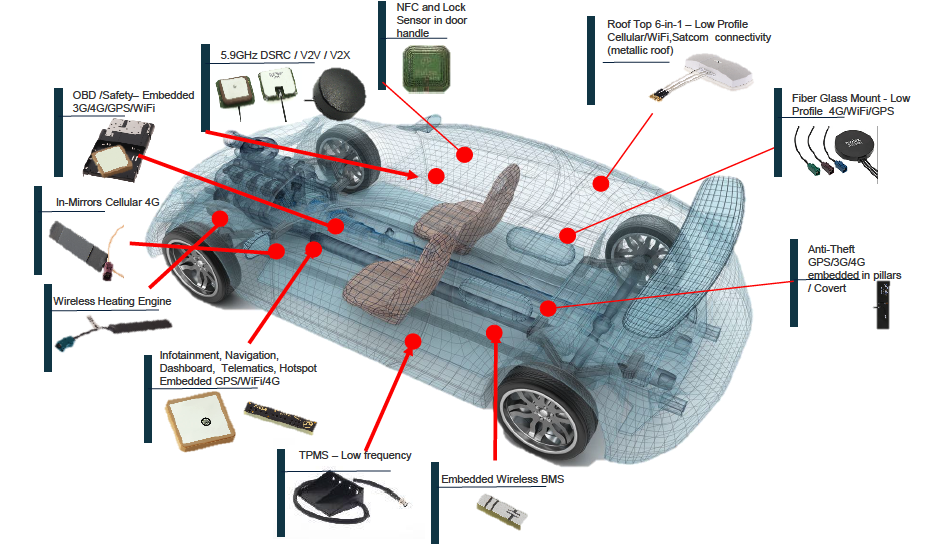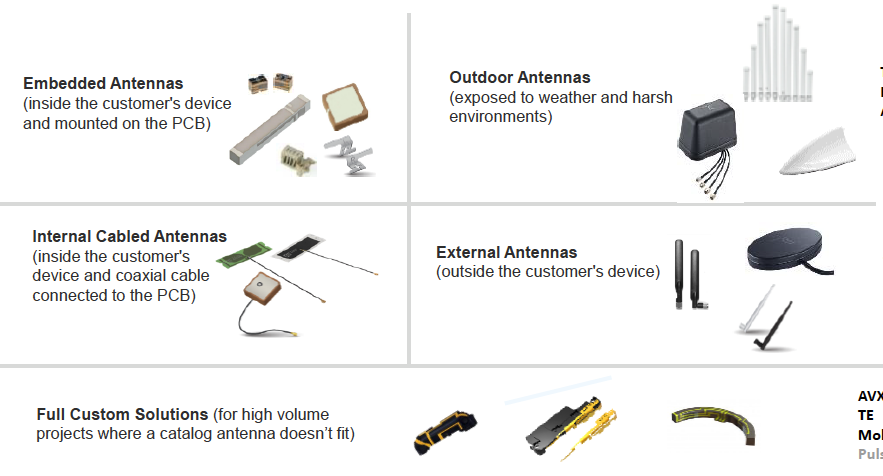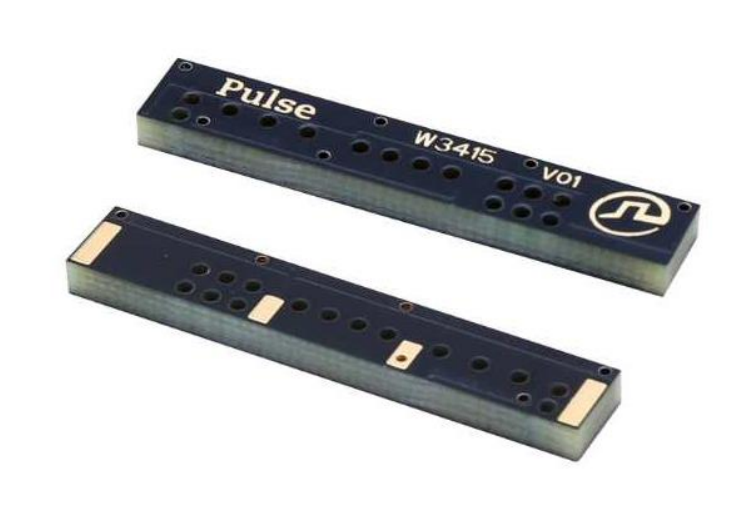By Edoardo Genovese, Product Development Manager RF, TTi
Improving road safety is a must for most countries. According to the European Commission,in 2019 in Europe there were 2% fewer deaths compared to 2018; still, that’s some 22,800 road traffic fatalities.
Efforts are underway to reduce this death toll; for example, the Commission’s project “Vision Zero” aims to achieve zero deaths on European roads by 2050.
Car makers are helping by making vehicles safer. Modern cars are now equipped with a dazzling array of advanced driver assistance systems (ADAS), which improve safety through automated functions such as blind-spot detection, adaptive cruise control, lane assist and emergency braking. Other information-based systems such as traffic-sign detection and real-time route guidance using vehicle-to-vehicle (V2V) and vehicle-to-infrastructure (V2X) systems also improve road safety, all of which use sensors and system like video cameras, lidar and radar. Powerful microprocessors process this data in real time and keep the driver informed about the road ahead.
More recent ADAS innovations are focused inside the vehicle, and include driver monitoring systems (DMS) – used to check driver alertness through their gaze and head position.
Increasingly, ADAS functions require wireless communication within and outside the vehicle, which requires an efficient antenna. Antenna design is a specialist skill and involves a deep understanding of how a radio frequency signal is radiated from a transmitting source. For signal reception, for example in GNSS for the vehicle’s infotainment system, the design characteristics are equally important due to the extremely low signal strengths received from orbiting satellites. Figure 1 illustrates some of the typical wireless-based applications found in a modern vehicle and the types of antennas used.

Figure 1: Typical automotive wireless applications and their antennas
Antennas come in all shapes and sizes. Typically, their size relates to the wavelength or frequency it needs to operate at. Being resonant devices, they will operate most efficiently within a relatively narrow frequency range. The antenna’s size or length usually incorporates the wavelength as part of its name, for example, a half-wave dipole. The wavelength, measured in meters, is the distance a radio wave will cover in one cycle. The majority of automotive applications involve transmitters and receivers operating in the very high frequency (VHF) range and above, between 165MHz and 2.4GHz. 5G wireless applications, such as V2X and V2V, increase that frequency toward 6GHz; see Figure 2.

Figure 2: Frequency spectrum examples used in automotive ADAS functions
For example, a wavelength of 1m equates a frequency of about 300MHz. A half-wave antenna at that frequency would be 0.5m, and a quarter-wave antenna 0.25m. The higher the frequency, the lower the wavelength.
Choosing an antenna
When selecting an antenna, there are several essential characteristics to review:
- Impedance matching: To achieve an efficient coupling of RF energy from the transmitter to the antenna, they both need to have the same impedance. This matching also relates to the transmission line medium used to connect them, for example, a coaxial cable. A 50-Ohm impedance is typical for most radio frequency and transmission line components.
- Antenna efficiency: This is a measure of how effective the antenna is at radiating an RF signal. The efficiency is the ratio of power radiated from the antenna compared to the input power and is expressed in dB.
- Antenna gain and directivity: Some antennas employ construction techniques that make them more efficient at radiating a signal in a particular direction. Omnidirectional antennas radiate equally in all directions compared to a directional antenna designed to focus transmitted energy and exhibit a gain characteristic in a given direction. Antenna gain is stated in dB against a standard antenna or an isotropic source – dBi. The directional antenna’s datasheet will include a radiation pattern indicating the relative field strength measured at the same distance around the antenna.
- Voltage standing wave ratio (VSWR): VSWR, or more commonly abbreviated to SWR, is a measure of how well the antenna is matched to the transmitter at the required resonant operating frequency. It is expressed as a ratio of the transmitter output power and the amount reflected back to the transmitter before being radiated. A 1:1 VSWR ratio indicates that the antenna and the transmitter are perfectly matched. For most practical purposes, a VSWR of 2.5:1 or below is acceptable.
An ideal antenna match of a VSWR 1:1 is highlighted in Figure 3. No power is reflected so the transmitter can operate efficiently. The higher the VSWR ratio, the transmitter needs to increase its power output to achieve the desired transmit and receive link budget. More output power requires more power to the transmitter, increasing power consumption.

Figure 3: With a VSWR of 1:1, there is no reflected power
Antenna types
As shown in Figure 1, there are different types of antennas used in automotive ADAS applications. These include external outdoor antennas mounted on the vehicle roof, internally-cabled antennas connected to a device’s main PCB and enclosed within the device, and embedded surface-mount antennas placed on the device PCB; see Figure 4.

Figure 4 – Popular antenna types
Embedded antennas are extremely popular for many compact applications, such as an in-cabin wireless hotspot. Figure 5 illustrates some common types of embedded antenna.
A quarter-wave ceramic monopole antenna is an excellent example of an embedded antenna. These antennas are suitable for use in a wide variety of various devices and are relatively simple to design into the end application.
A wide variety of antennas are available to suit most applications: 5G, V2X/V2C and GNSS are popular automotive applications. The Pulse W3415 is an example of a surface-mount embedded antenna suitable for 5G applications, with its coverage from 617MHz to 6GHz, perfect for vehicle telematics applications; see Figure 5.

Figure 5: Pulse W3415 surface-mount embedded antenna for 5G
For V2X/V2C systems, the ceramic patch AVX 9001118 antenna is suitable for the 5.9GHz spectrum. And, stamped metal embedded antennas, such as the omnidirectional AVX 1002298, are becoming popular for the emerging dedicated short-range (DSRC) V2X/V2C applications operating in the 5.8GHz radio spectrum.
Multiband GNSS antennas are typically externally mounted to achieve the optimal signal-to-noise ratio. An example is the Abracon AEACBD050018-SG4L2L5. It is IP67-rated and supports all operational GNSS constellations.
In the end, each ADAS function will have different needs in terms of operating frequency, size constraints and the physical mounting method. 5G, V2X/V2C and multi-band GNSS are three of the most automotive popular uses, and antennas from a variety of different suppliers can be found on the TTI website.








